Types of Pillows (2025)
Updated: December 1, 2025 | Published: August 29, 2024A comfortable pillow is essential for waking up refreshed and avoiding a painful, stiff neck in the morning. What’s more, finding the right one for your sleeping position can also be tricky:
- Side sleepers would benefit from a softer pillow with a higher loft to keep the neck properly aligned.
- Stomach sleepers, on the other hand, are better off with a medium to medium-firm pillow with a thinner loft to maintain a comfortable neck position.
- Back sleepers should opt for a balance, with a pillow that’s supportive enough without pushing their necks too far forward.
This article explores the various pillow types to see which one best matches your sleeping needs.
Down Alternative Pillow
Down alternative pillows mimic the feel of natural down but are made from synthetic materials, typically polyester fibres. Polyester is known for its durability but isn’t as breathable as other fabrics.
Down alternative pillows are designed to provide a similar softness and loft as down pillows, but without using animal products, making them more affordable, sustainable, and hypoallergenic. If used regularly, these pillows may need to be replaced every 1–2 years.
Best for: Back and side sleepers, due to their fluffy nature and their medium-soft to medium feel.
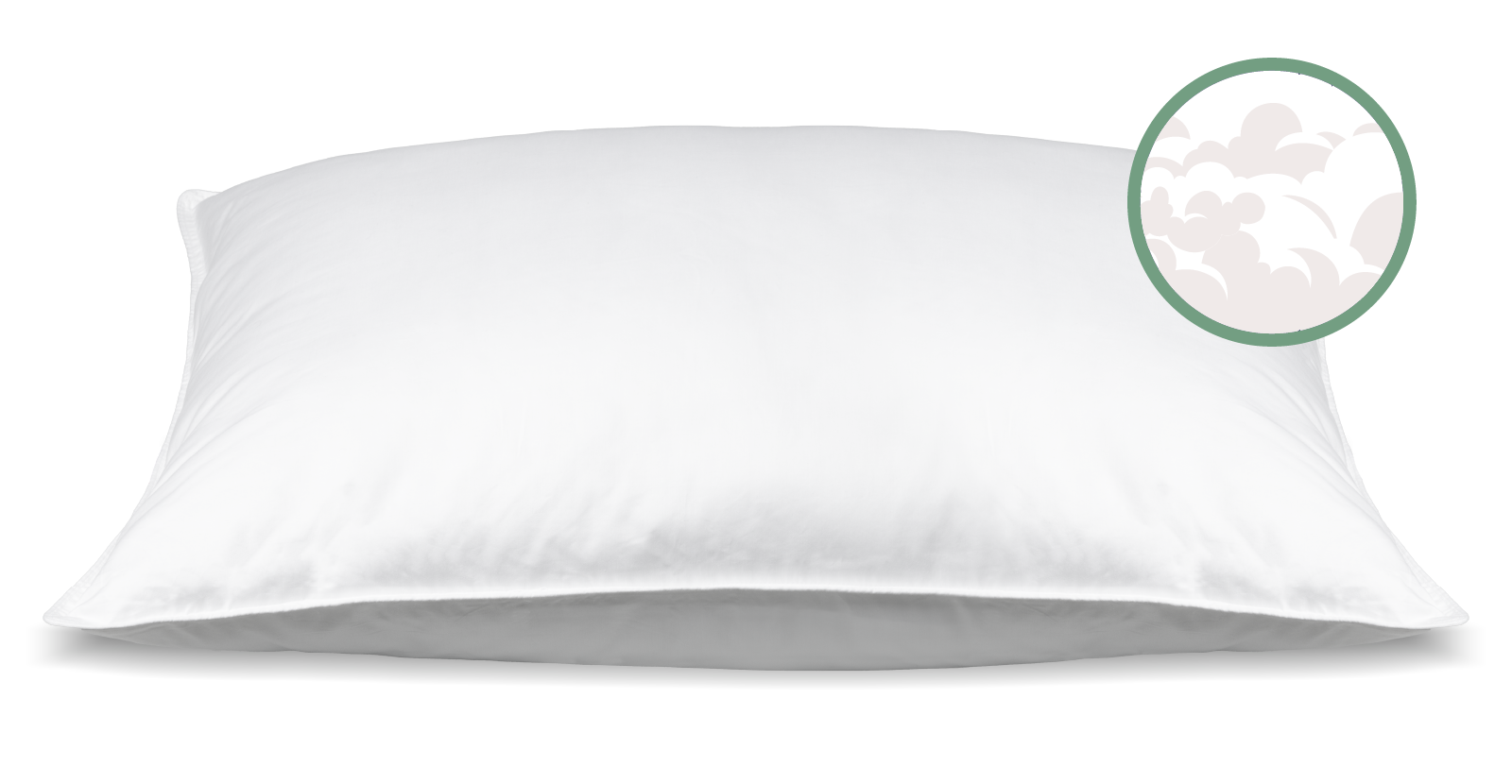
Pros
Cons
- More affordable than classic down pillows
- Hypoallergenic
- Machine-washable and easy-to-clean
- Vegan
- Not always as durable as other pillow types
- May not be ideal for hot sleepers
- Can develop lumps over an extended period of time
Pros | Cons |
|---|---|
|
|
Feather Pillow
Feather pillows are filled with the outer feathers of ducks or geese, making them soft, flexible, and supportive. Although feather pillows are more budget-friendly than down pillows, they’re typically flatter and firmer.
Not all feather pillows are hypoallergenic, and some incorporate down for a balance of softness and support. They also must be fluffed regularly to maintain their loft, but with proper care, feather pillows can last 5–10 years.
Best for: Back and side sleepers, due to the mid-to-low loft that promotes neck and spine alignment.
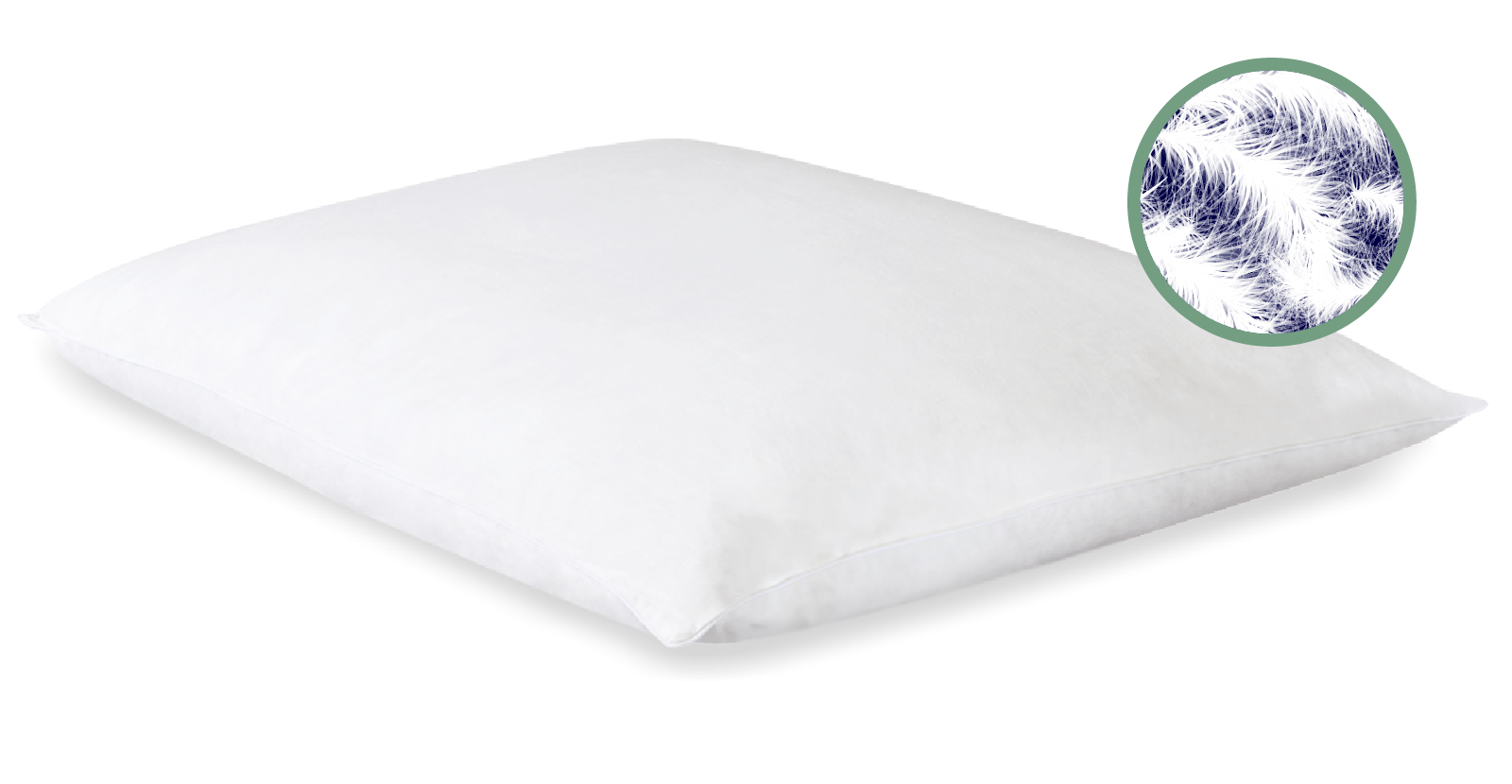
Pros
Cons
- More affordable than down pillows
- More durable than other pillow types
- Moldable and holds shape
- More supportive than some other pillow types
- Needs a higher level of care and maintenance
- Not all feather pillows are hypoallergenic
- Feathers may poke through the pillow casing which can be irritating
- Can have an odour
- Not all feather pillows have ethically sourced materials
Pros | Cons |
|---|---|
|
|
Down Pillow
Down pillows are filled with quill-less feather clusters from the underbelly and chest of birds such as ducks or geese. This material is prized for its exceptional softness and provides great insulation, making these pillows particularly light and fluffy. Down pillows also provide ample support and head and neck contouring.
Not all down pillows use ethically sourced materials, however. Look for down pillows certified by Responsible Down Standard or DOWNMARK®.
Similar to feather pillows, down pillows should be fluffed regularly but should have a longer lifespan of 5–10 years.
Best for: Side, stomach, and back sleepers.
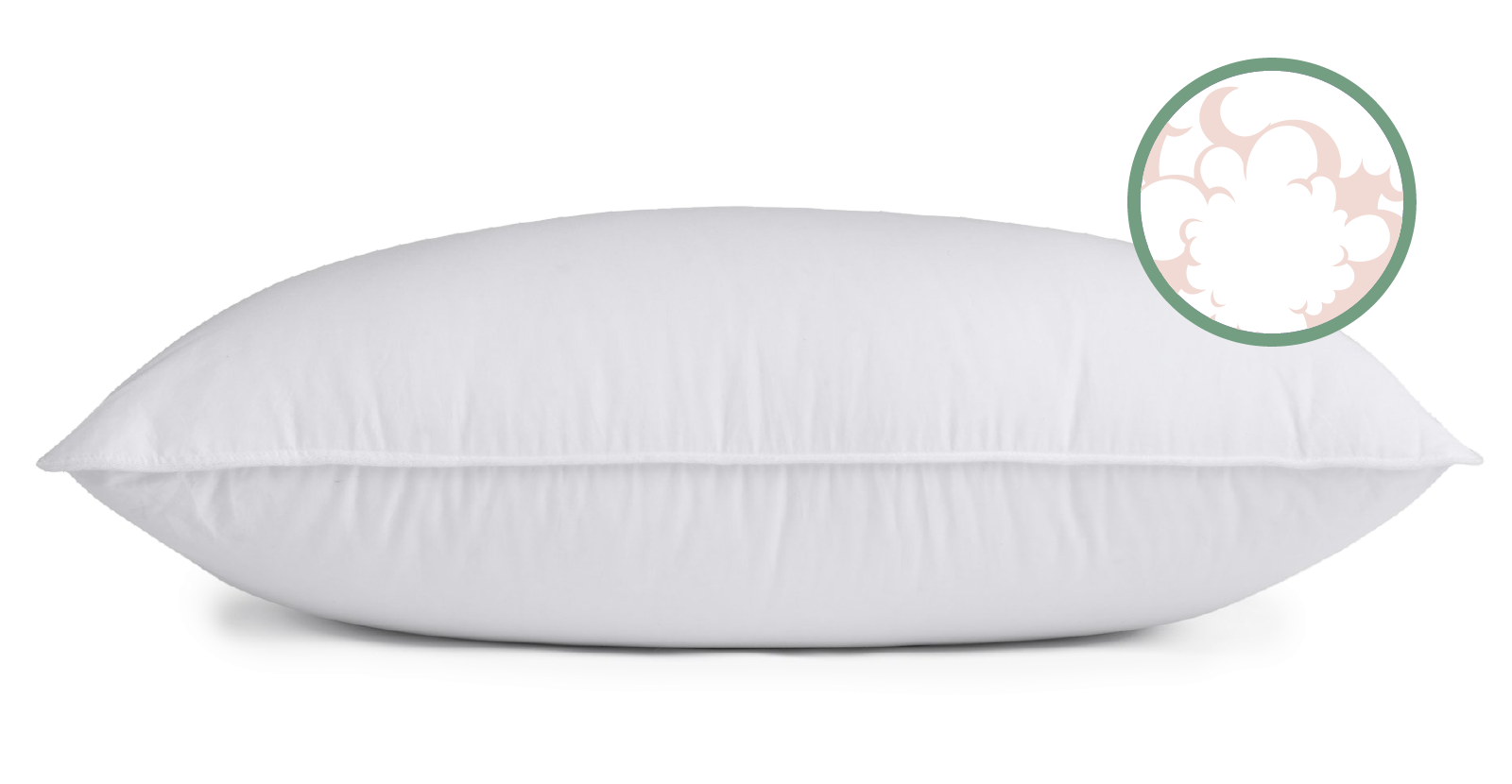
Pros
Cons
- Plush and luxurious feel
- Durable
- Lightweight and moldable
- Breathable and insulating
- More expensive than other pillow options
- Can be an allergen risk for some people
- Needs a higher level of care and maintenance
- Not all down pillows have ethically sourced materials
Pros | Cons |
|---|---|
|
|
Cotton Pillow
Cotton pillows are filled with cotton, a natural fibre known for its softness, breathability, and hypoallergenic properties. They are often encased in cotton fabric, making them a popular choice for people looking for a pillow made of more natural materials.
Cotton pillows tend to be flatter and have less “sink” when you rest your head against them. Although cotton pillows are often machine-washable and easier to care for than other pillow options, they need to be washed regularly, which shortens their lifespan.
Depending on the quality of the cotton, you should replace your cotton pillow every 1–3 years.
Best for: Back and stomach sleepers who want a low-to-mid loft.
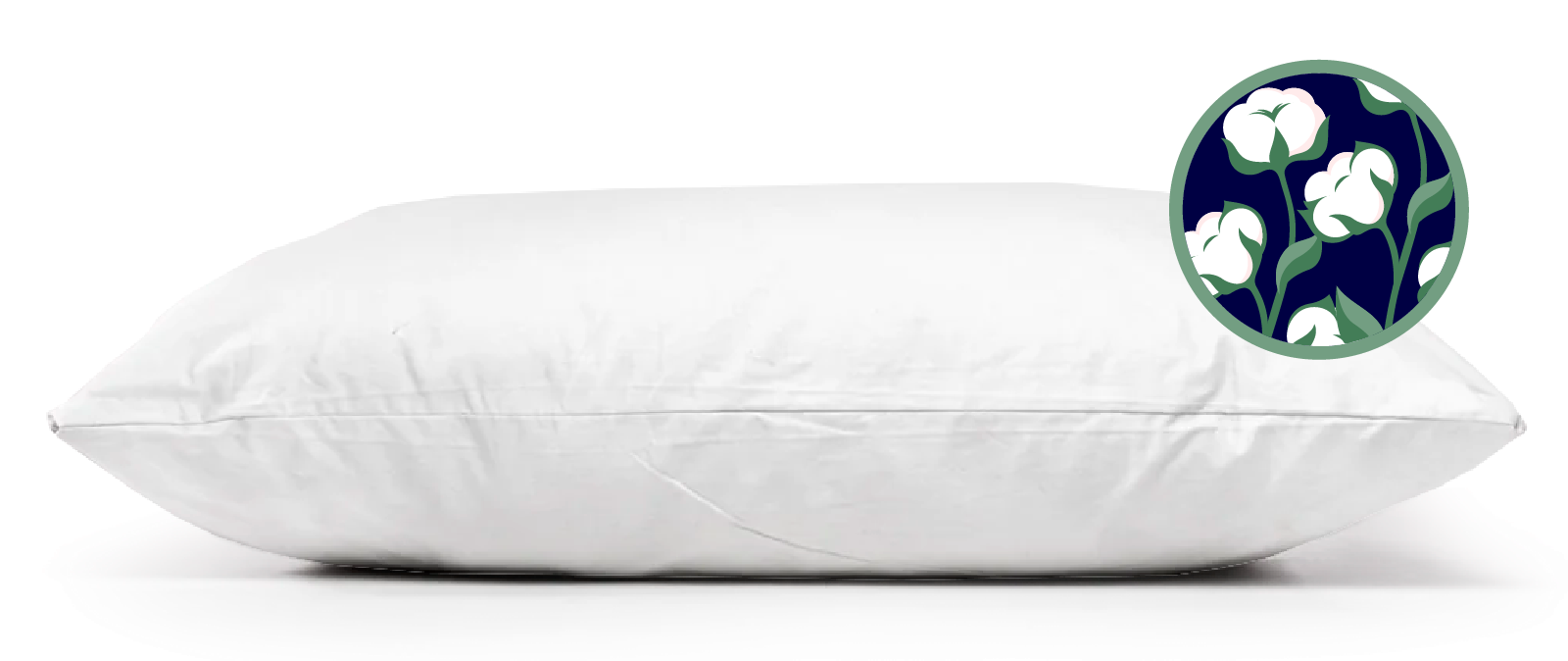
Pros
Cons
- Natural cotton is hypoallergenic
- Breathable; ideal for hot sleepers
- Easy to care for, and machine-washable
- Not as durable as other pillow options
- May not contour to the head and can become lumpy
- Needs to be cleaned regularly
Pros | Cons |
|---|---|
|
|
Polyester Pillow
Polyester pillows are made with polyester fill and shell, and are a popular budget-friendly choice. These pillows are popular due to their affordability and availability in a wide variety of sizes. However, they may not be ideal for hot sleepers as polyester pillows tend to absorb heat.
Polyester is often used in pillow filling because it is cheaper, durable, lightweight, and can mimic the feel of down or other natural materials, albeit not as breathable. Polyester fill tends to lend a soft and fluffy feel to pillows but can be produced with varying levels of firmness. With regular use, polyester pillows can last 1–2 years.
Best for: All types of sleepers, as they can be produced to different firmness levels.
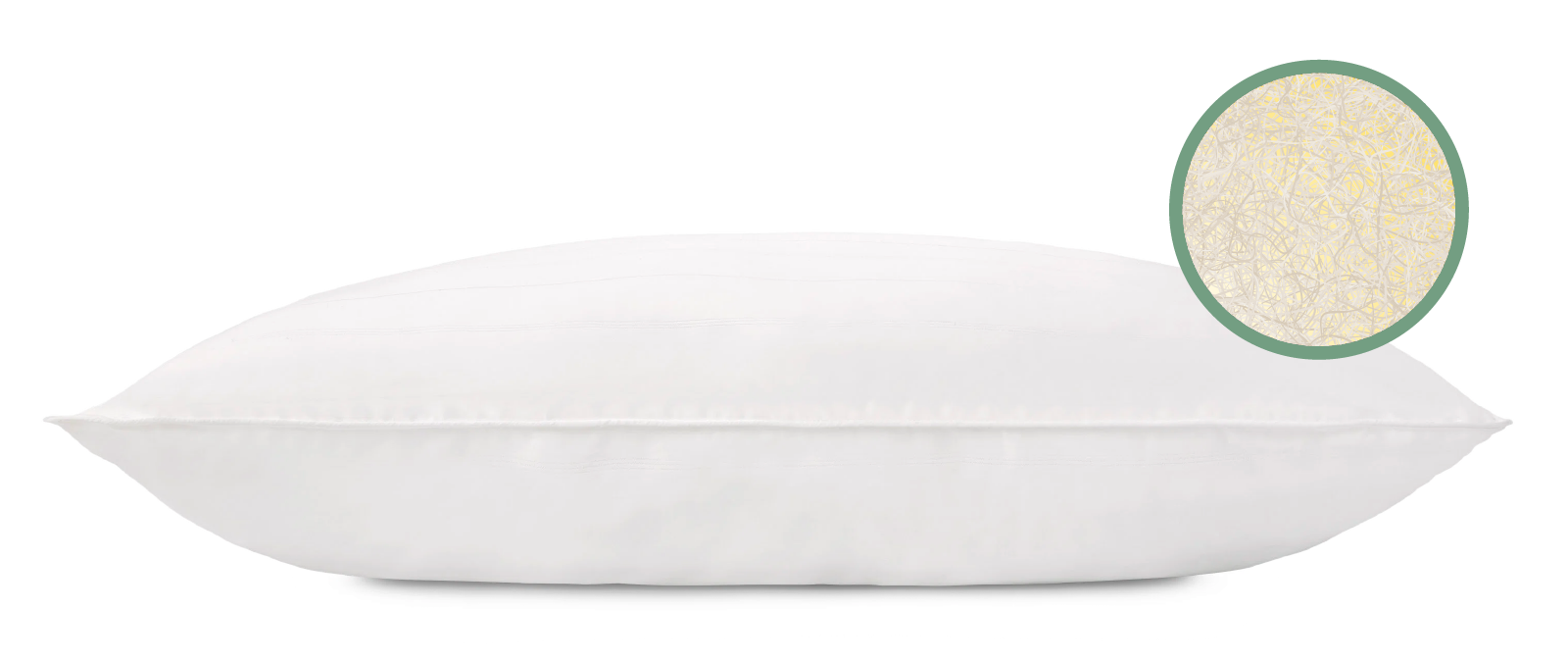
Pros
Cons
- Affordable
- Hypoallergenic
- Easy to care for
- Machine washable
- Can flatten out over time
- Short lifespan
- Less breathable; not ideal for hot sleepers
Pros | Cons |
|---|---|
|
|
Memory Foam Pillow
Pillows made of memory foam (also known as viscoelastic foam) can have a solid (a single piece of foam) or shredded memory foam filling.
Unlike shredded memory foam pillows, which contain small pieces of foam allowing for adjustability and breathability, solid memory foam pillows have a uniform structure that will better retain their shape, providing a firmer feel and support.
Depending on the density and type of foam used, memory foam pillows can vary in price and durability. On average, memory foam pillows can last for 2–3 years.
Best for: Back and stomach sleepers. If the pillow has an adjustable loft, it can also be suitable for side sleepers.
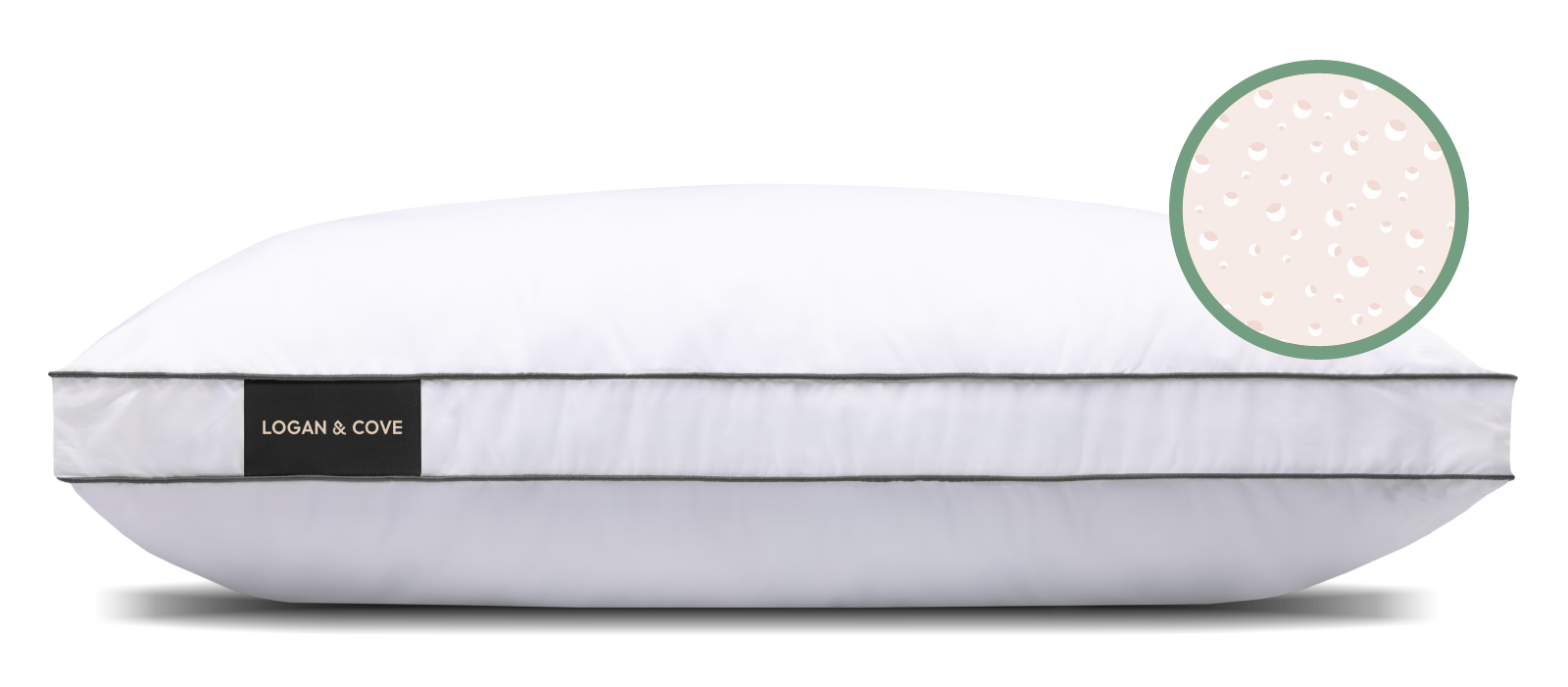
Shredded Memory Foam Pillow
Pros
Cons
- Adjustable loft and support
- More breathable than traditional memory foam pillows
- Doesn’t clump
- Contours the head and neck well for support
- Foam filling is not machine washable
- The foams may lose firmness over time
- Some pillows may off-gas when first unpacked
Pros | Cons |
|---|---|
|
|
Solid Memory Foam Pillow
Pros
Cons
- No clumping
- Provides pressure and pain relief by contouring around your body
- Some foams can be less breathable and retain heat
- Some may off-gas when first unpacked
- The foams may lose firmness over time
- Not machine-washable
Pros | Cons |
|---|---|
|
|
Bamboo Pillow
Bamboo pillows are typically made with a cover made of bamboo fibres and a filling made of memory foam, shredded foam, or a combination of both.
Bamboo fibres are derived from the pulp of the bamboo plant and are known for being environmentally friendly, antimicrobial, cooling, and breathable. With proper care, they can last for 2–3 years.
Best for: Back sleepers due to the firmer feel of the memory foam filling.
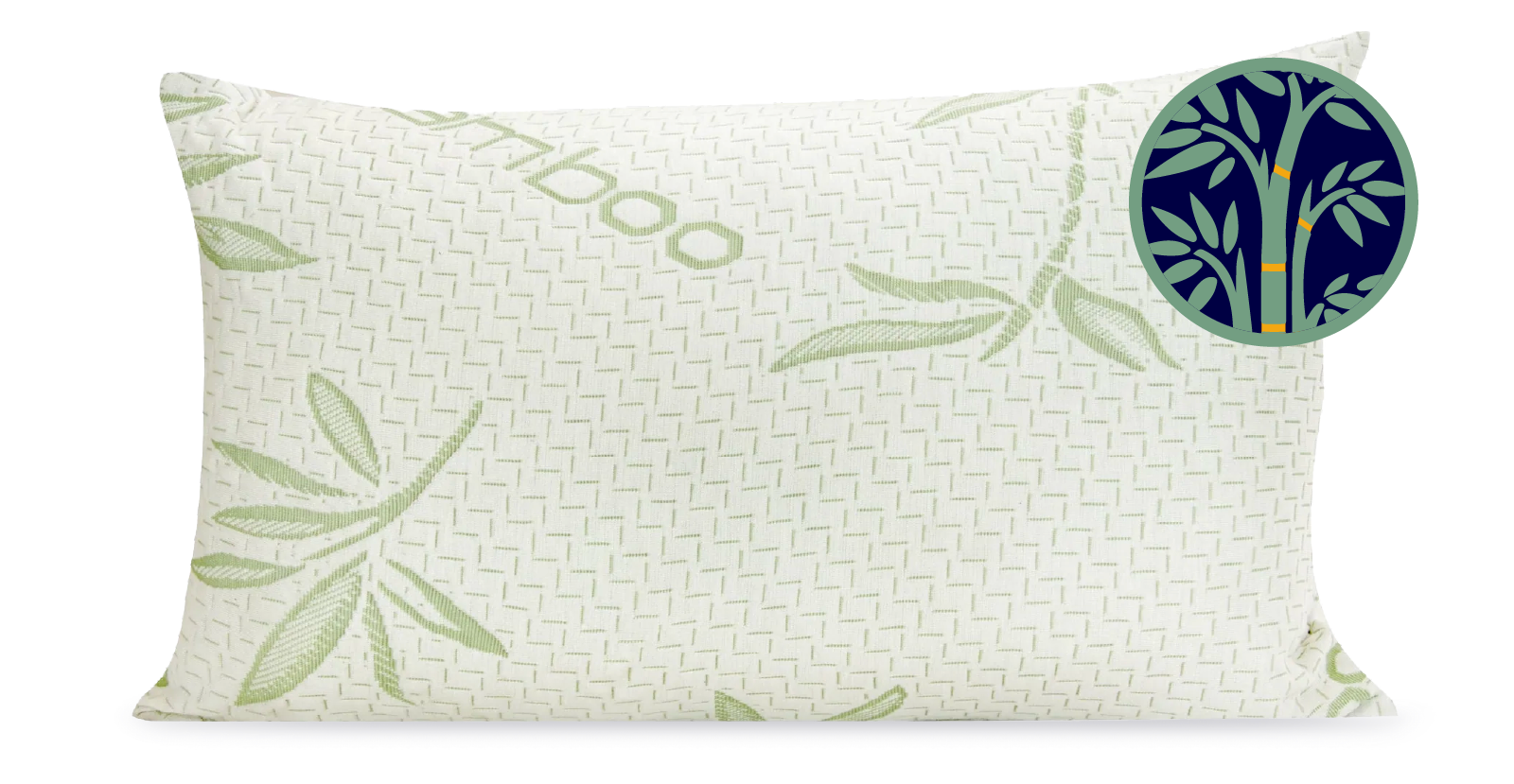
Pros
Cons
- Antimicrobial
- Hypoallergenic
- Moisture-wicking
- Cooling
- Can be difficult to clean
- Heavier weight pillows
- May off-gas when first unpacked
Pros | Cons |
|---|---|
|
|
Latex Pillow
Latex pillows are made from natural, synthetic, or blended latex. Latex is a material derived from the sap of rubber trees or produced synthetically.
This type of pillow is available in both solid and shredded forms. Latex pillows are known for their support of the head and neck, durability, and softness.
Depending on the frequency of use and level of care, latex pillows can last 3–7 years.
Best for: Side and back sleepers due to their balanced softness, support, and higher loft.
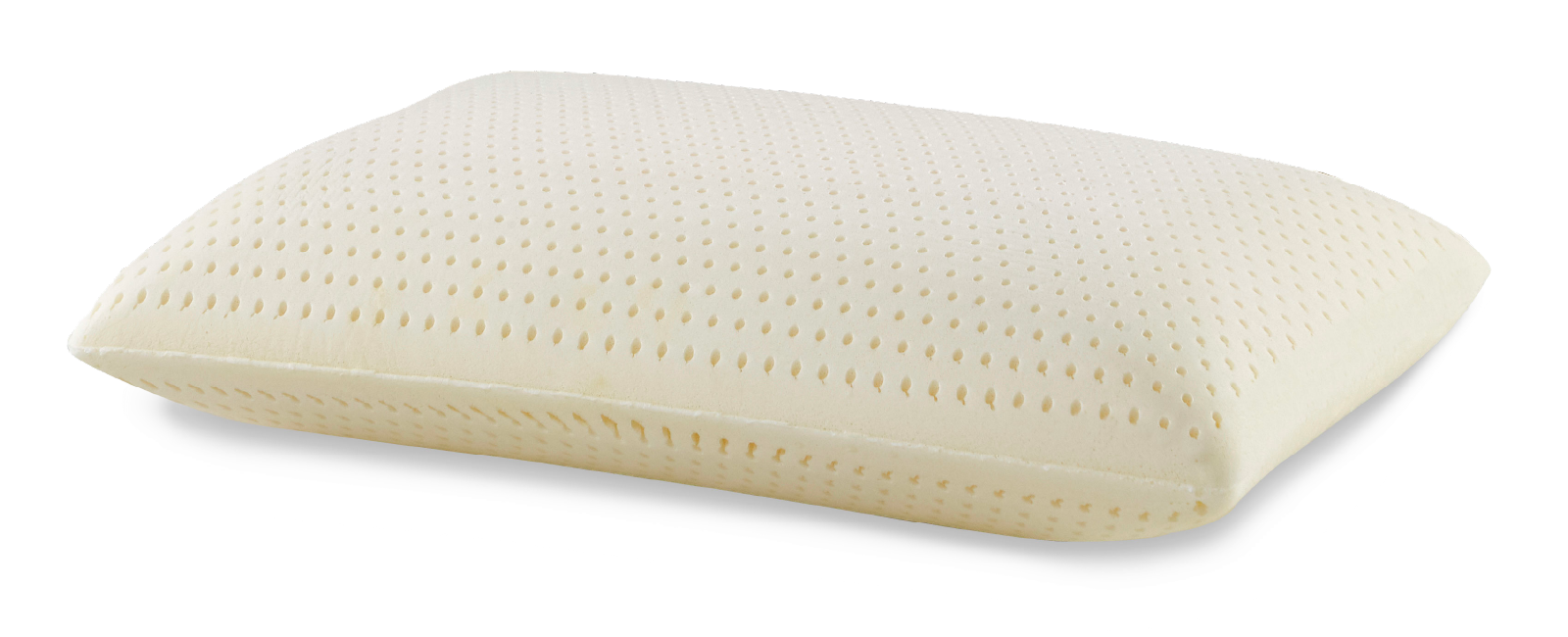
Pros
Cons
- Durable
- Moldable
- Breathable
- Natural latex is hypoallergenic and biodegradable
- Antimicrobial
- Synthetic latex pillows may have off-gassing when first unpacked
- Not machine-washable
- Can be expensive
Pros | Cons |
|---|---|
|
|
Wool Pillow
Wool pillows are pillows filled with natural wool fibres, often encased in a cotton or other natural fabric cover. Wool is a natural fibre grown on animals and is known for its breathability, durability, moisture-wicking properties, and temperature regulation.
These pillows can be expensive, but they are a popular choice for those seeking a natural and hypoallergenic option. Wool pillows, with proper care, can last for a long time.
Best for: Side and back sleepers due to their soft to medium firmness and medium loft.
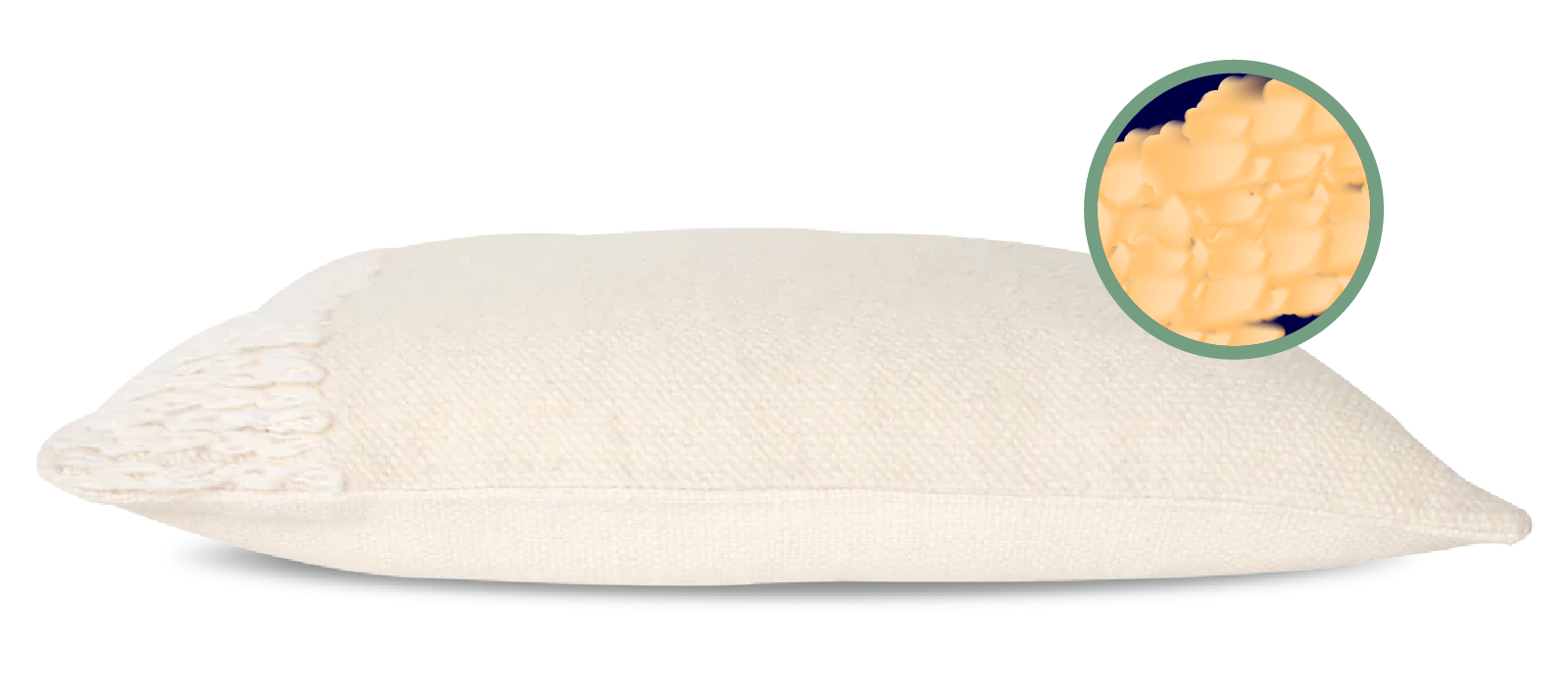
Pros
Cons
- More durable than other pillow options
- Breathable and moisture-wicking
- Hypoallergenic and biodegradable
- Antimicrobial
- Can be difficult to clean
- High-quality wool pillows can be expensive
- Wool may not be ethically sourced
- Can lose loft over time
- Heavyweight pillow
- Can form lumps
Pros | Cons |
|---|---|
|
|
Gel Pillow
Gel pillows are designed with a layer or infusion of cooling gel, usually combined with memory foam or latex, to provide a cooler sleeping surface.
The gel layer is usually firm and helps to dissipate heat, making it popular among those who tend to sleep hot. This type of pillow offers the contouring support of memory foam, but with the added benefit of temperature regulation.
With regular use and proper care, gel pillows can last for 2–5 years.
Best for: Stomach, back, and hot sleepers due to their lower loft, firmness level, and cooling properties.

Pros
Cons
- Cooling
- Easy to care for
- Hypoallergenic
- Pressure-point relief
- May be too firm for some
- Can be expensive
- Some pillows may off-gas when first unpacked
- Heavier weight pillows
Pros | Cons |
|---|---|
|
|
Buckwheat Pillow
Buckwheat pillows are filled with the hard outer shells (husks) of buckwheat seeds. They have been used for centuries, particularly in East Asia. They are known for their ability to maintain natural spinal alignment and prevent neck pain.
A well-maintained buckwheat pillow can last 8–10 years, and even longer if you periodically replace the hulls and let them air out in the sun.
Best for: Back and stomach sleepers due to their firmness and the level of support they provide.

Pros
Cons
- Breathable
- Durable and long-lasting
- Hypoallergenic and biodegradable
- Malleable
- Adjustable loft/firmness (by adding or removing hulls)
- Can be too firm for some
- Hulls can be noisy when you move your head
- Can take some time to get used to the texture
- Higher maintenance
- Heavier weight pillow
- Can be more expensive than other pillow types
- Not as accessible in Canada
Pros | Cons |
|---|---|
|
|
Microbead Pillow
Microbead pillows are made with tiny polystyrene beads, similar to those found in bean bags. The outer casing is usually made from a stretchy, soft fabric that allows the beads to move freely inside.
These pillows provide customizable support similar to buckwheat pillows, contouring to the shape of the head and neck. While they offer some breathability and malleability, they can lose shape faster than other fills. Microbead pillows can last 1–3 years with proper care.
Best for: Back sleepers due to their higher firmness level.

Pros
Cons
- Moldable
- Breathable
- Contours the body, providing targeted support
- Lightweight
- Chemical off-gassing when first unpacked
- Can be too firm for some
- Flattens out over time
- Can be difficult to clean
Pros | Cons |
|---|---|
|
|
Kapok Pillow
Kapok pillows are filled with natural kapok fibres derived from the seed pods of the kapok tree, primarily found in tropical regions such as Southeast Asia and Central America.
These fibres are lighter than cotton, fluffy, and have a down-like quality, making kapok pillows soft and light. Some pillows can also blend kapok and other materials, such as latex, which may be more supportive.
The outer covers of kapok pillows are typically made from organic cotton or other breathable, natural materials.
Kapok pillows can last for over 10 years, with proper care (fluffing and sun-drying).
Best for: Back sleepers due to the minimal resistance they offer.
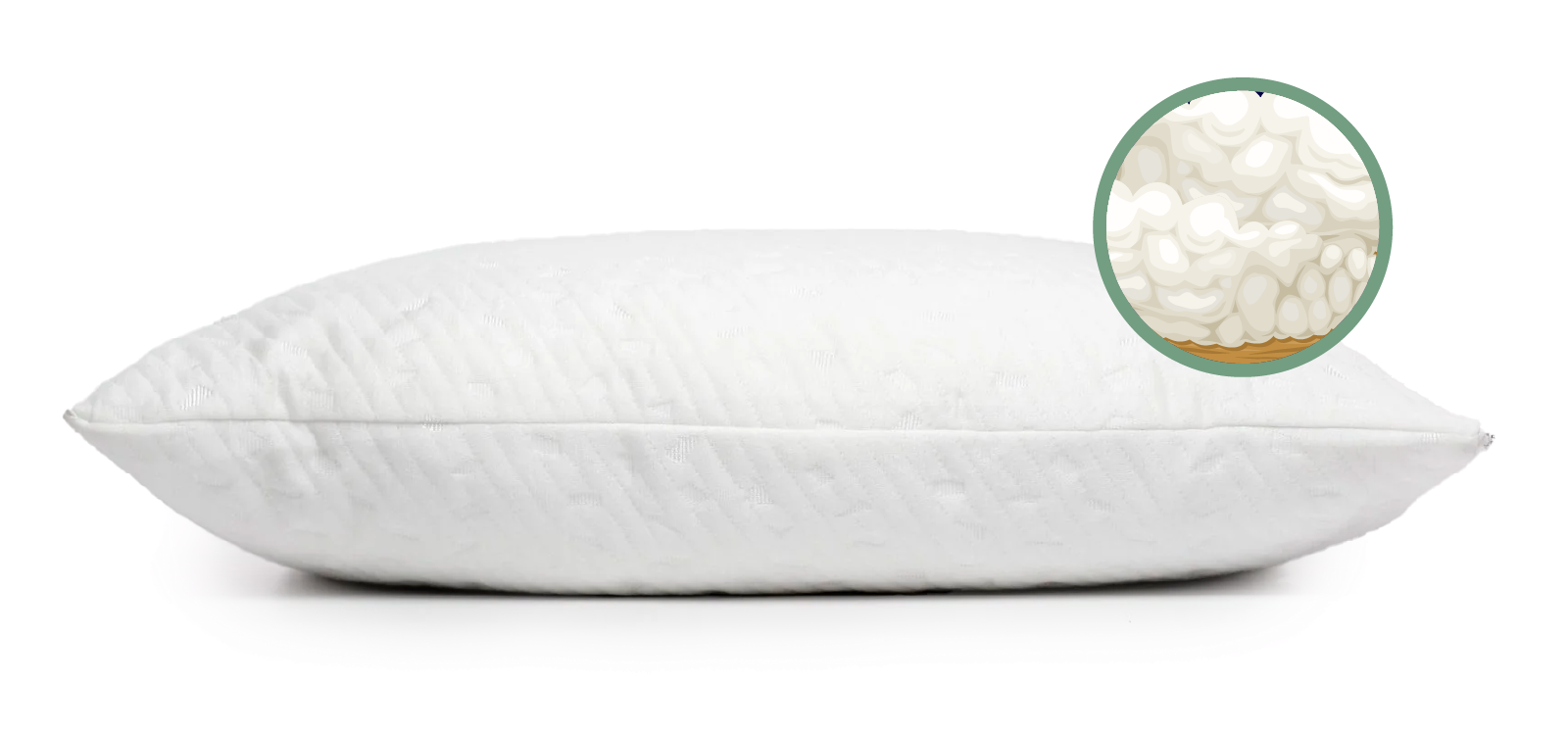
Pros
Cons
- Hypoallergenic
- Breathable
- Lightweight
- Durable
- Sustainably grown fibre
- Can be too soft and not provide enough spinal alignment support
- Can be expensive
- Not as accessible in Canada
- Needs a higher level of care and maintenance
Pros | Cons |
|---|---|
|
|
Orthopedic Pillow
Orthopedic pillows are specially designed according to orthopedic guidelines to provide support and alignment for the neck, spine, and other parts of the body. They can help relieve pain and discomfort associated with poor sleeping posture, medical conditions, or injuries.
They are typically made from high-density memory foam, latex, or other supportive materials that contour to the body’s shape. The lifespan of an orthopedic pillow may depend on the material it is made from.
Best for: Sleepers who have neck, shoulder, or back pain, or are recovering from injuries.
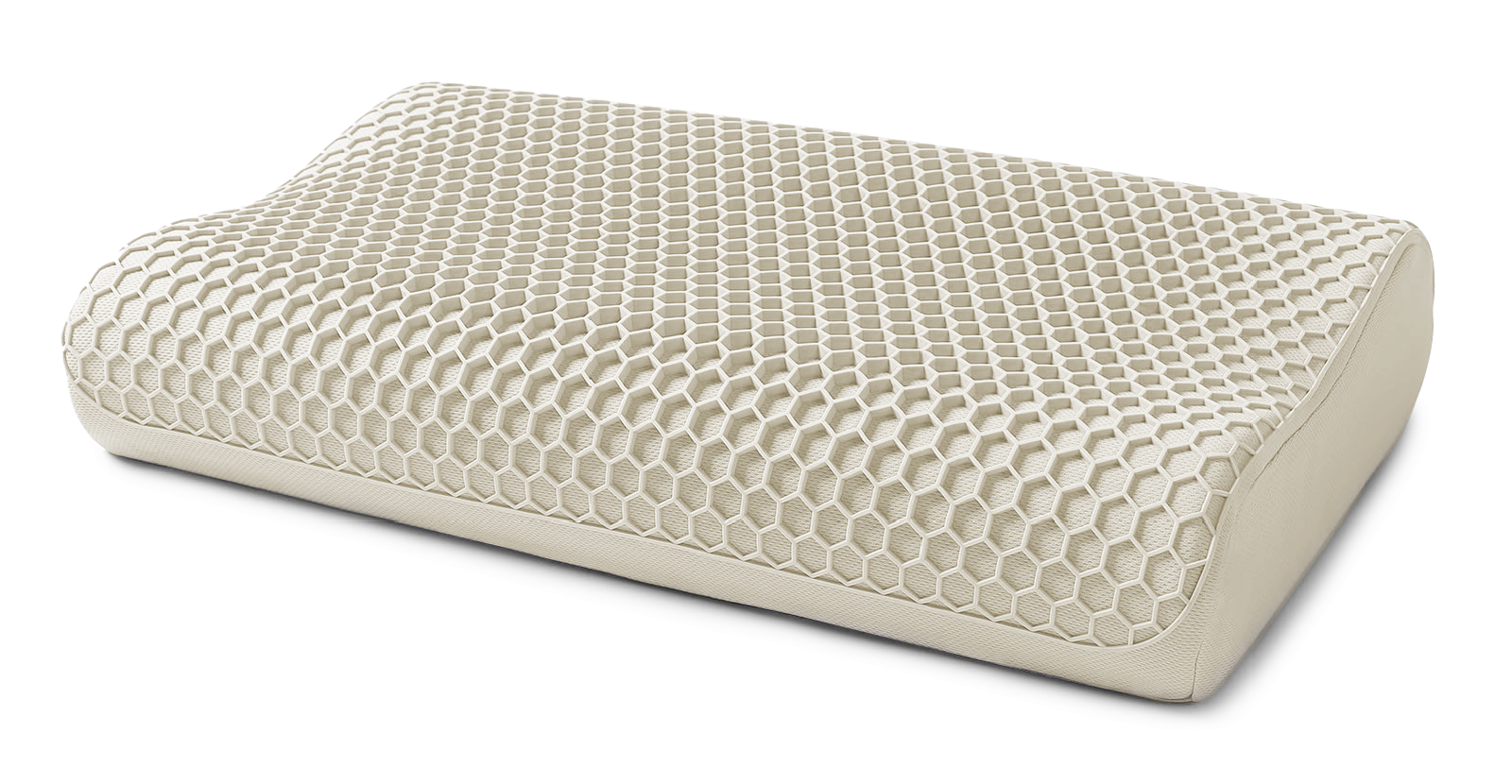
Pros
Cons
- Can reduce pain from poor sleep posture or injuries
- Comes in different shapes beyond the standard pillow size to serve different needs
- Improves body alignment
- Can be more expensive than other pillow types
- Unique design can take time to get used to
Pros | Cons |
|---|---|
|
|
Body Pillow
Body pillows are long, narrow pillows designed to provide full-body support. They can be log-shaped, U-shaped, or C-shaped. They are often used to enhance comfort during sleep by supporting the head, neck, back, hips, and legs.
They are typically marketed as pregnancy products and filled with microbeads, down, or memory foam. The materials used will determine the pillow’s durability and lifetime.
Best for: Pregnancy, side sleepers, and those who like to hug a pillow when they go to sleep.
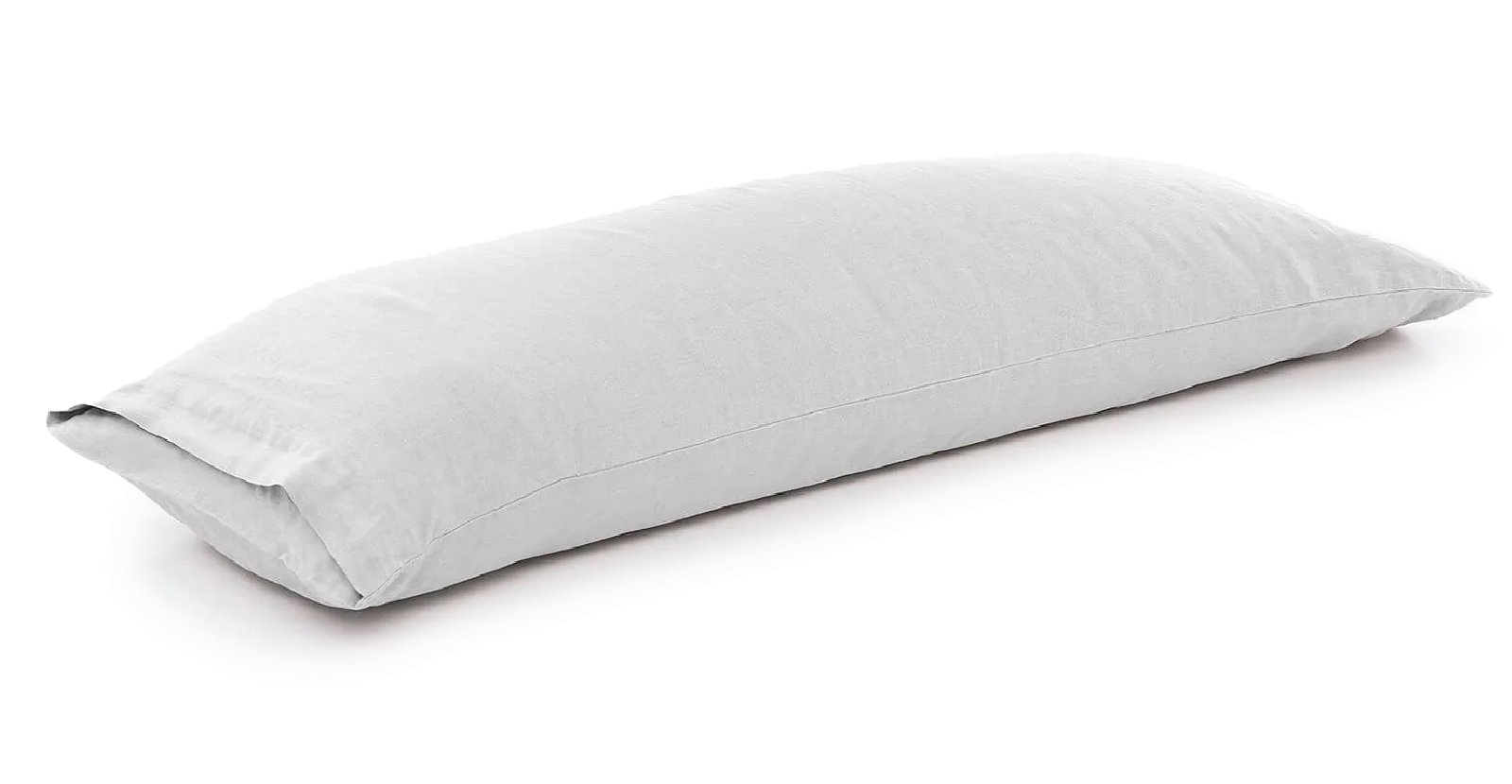
Pros
Cons
- Can improve physical comfort during pregnancy
- Full-body support that promotes spinal alignment
- The filling can be adjusted to personal preference
- Can take up a lot of bed space
- Finding the correct size of pillowcases may be difficult
- Can be tricky to clean
- Can take time to get used to
Pros | Cons |
|---|---|
|
|
Frequently Asked Questions
What type of pillow is best for side sleepers?
Side sleepers would benefit from a pillow with a softer feel and a higher loft. We recommend an adjustable memory foam pillow for side sleepers.
What type of pillow is best for stomach sleepers?
A pillow with a thinner loft, some cooling properties, and a firmer feel is ideal for stomach sleepers. We recommend a gel memory foam pillow if you prefer sleeping on your stomach.
How can you wash pillows?
Machine-washable pillows should be washed on a gentle cycle with warm water and mild detergent. When drying, squeeze out as much water as possible from the pillows and then use the delicate setting on low heat or no heat for several drying cycles. These include:
- Down pillows
- Down alternative pillows
- Polyester pillows
- Feather pillows
- Cotton pillows
Some pillows can be fully washed but need to be cleaned by hand and air-dried. These include:
- Wool pillows
- Microbead pillows
Pillows that can’t be fully immersed in water (and can’t be hand- or machine-washed) should be spot-cleaned. These include:
- Any pillows with memory foam (including gel pillows)
- Latex pillows
- Bamboo pillows
To clean buckwheat pillows, remove the hulls, wash the removable pillowcase, and air-dry the hulls under the sun before returning them to the clean pillowcase. Avoid soaking the hulls in water, as this will damage them.
How do you fluff a pillow?
To fluff a pillow, shake it vigorously and push the sides to redistribute the filling. You can also fold and release it, or tumble it in the dryer on a no-heat setting for 10–15 minutes.
For a natural option, air the pillow outside or in a well-ventilated area. Regularly rotate and flip the pillow to maintain its shape.
How often should you change your pillows?
Over time, pillows lose their support and the fill material, whatever it may be, can start to break down. Pillows should generally be replaced every couple of years. However, depending on the type of pillow and its typical lifespan, you may have to change out your pillow sooner or later.
Where do you buy pillows?
You can buy pillows online directly through Canadian mattress and bedding brands such as Douglas, Logan & Cove and Juno, or through retailers such as Amazon. You can also buy pillows in person through department stores, home goods stores, and bedding stores.
Finding the right pillow is key to a great night’s sleep, and different types suit different needs. Choose the pillow that best suits your needs, and experience the difference in your sleep quality. Here are our top picks for the best pillows in Canada:
- Logan & Cove Adjustable Memory Foam Pillow: This pillow customizes your comfort and is ideal if you’re seeking personalized support.
- Juno Down Alternative Pillow: Enjoy plush, soft, and hypoallergenic comfort with these down alternative pillows.
- Douglas Cooling Gel Memory Foam Pillow: Stay cool with this gel-infused memory foam pillow that’s perfect for hot sleepers.
Our goal is to provide the information you need to find the mattress that’s right for you. Get started with some of our most popular mattress shopping resources:
- Best Mattress Guides: Best Mattress Canada, Best Mattress In a Box
- Reviews: Douglas Original, Logan & Cove Choice, Juno, Octave Vista
- Comparisons: Douglas vs Endy, Douglas vs Casper
We use independent, third-party engineering firms (commissioned by us) with the APEGA stamp of approval to conduct mattress testing on our behalf, using publicly available data. We review and test all mattresses on 40+ criteria we think are important to you, including price, country of manufacture, sleep trial, warranty, features, materials used, motion isolation and edge support ratings, customer satisfaction reviews, returns, and refunds.
